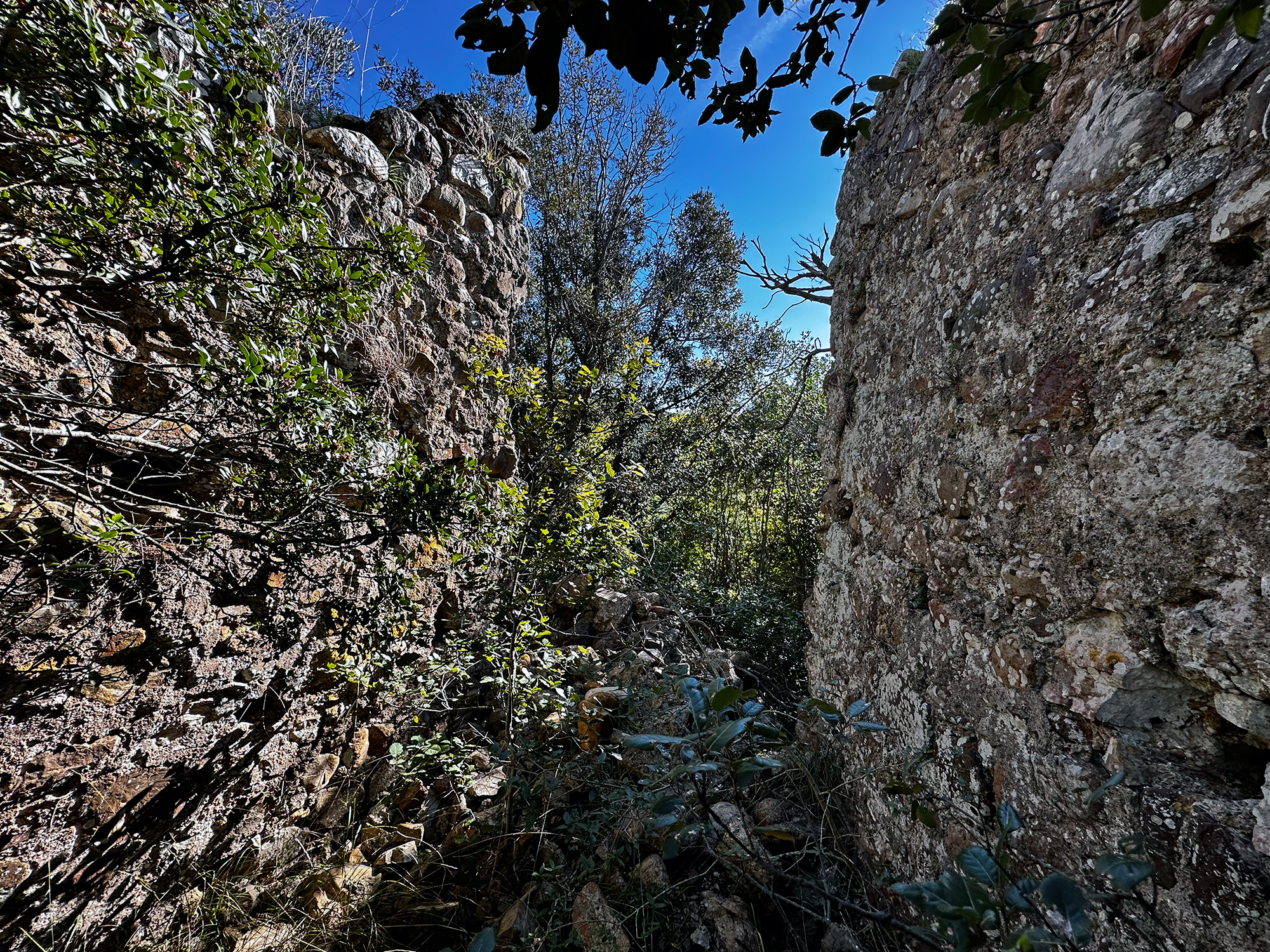
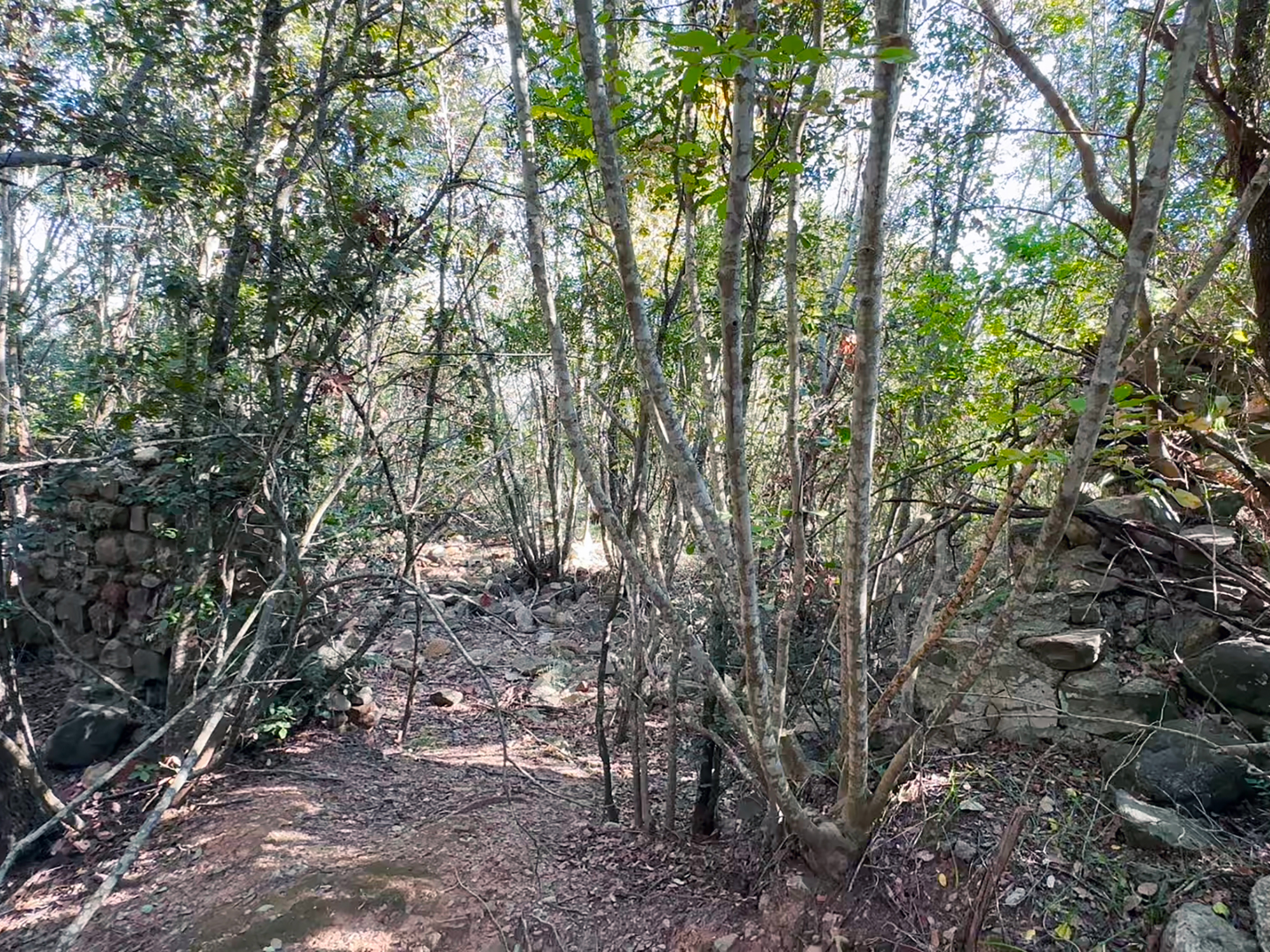
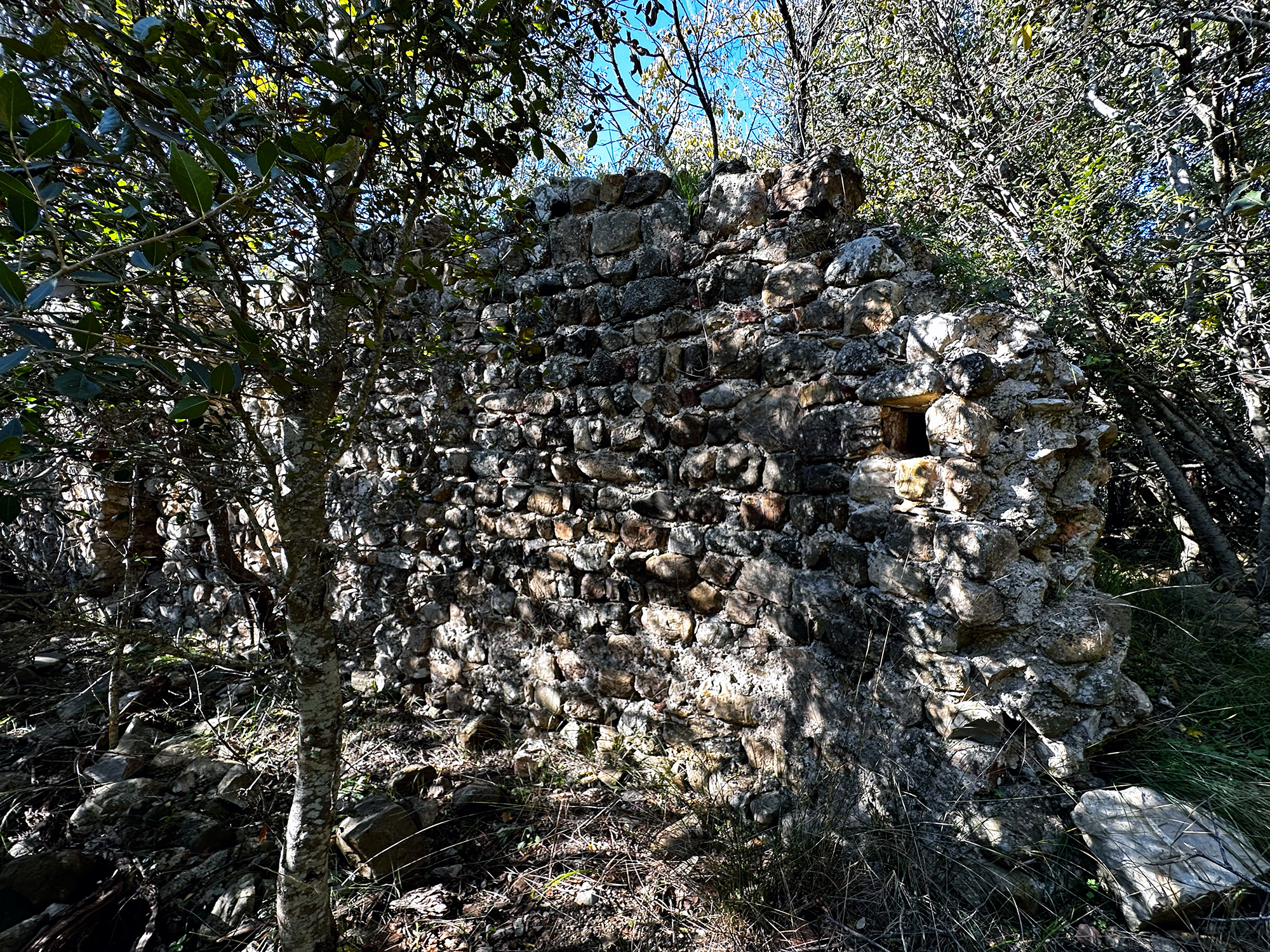
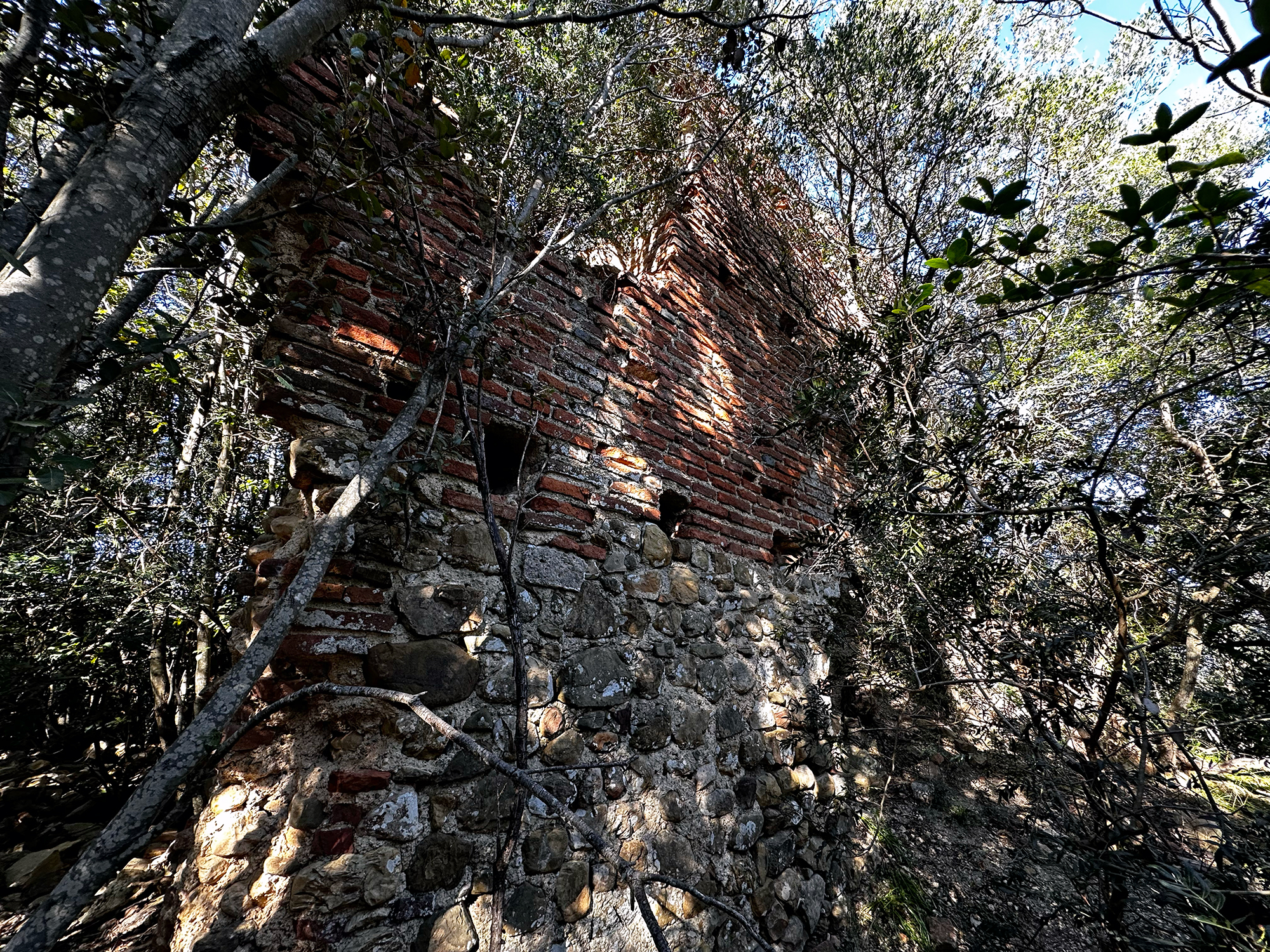
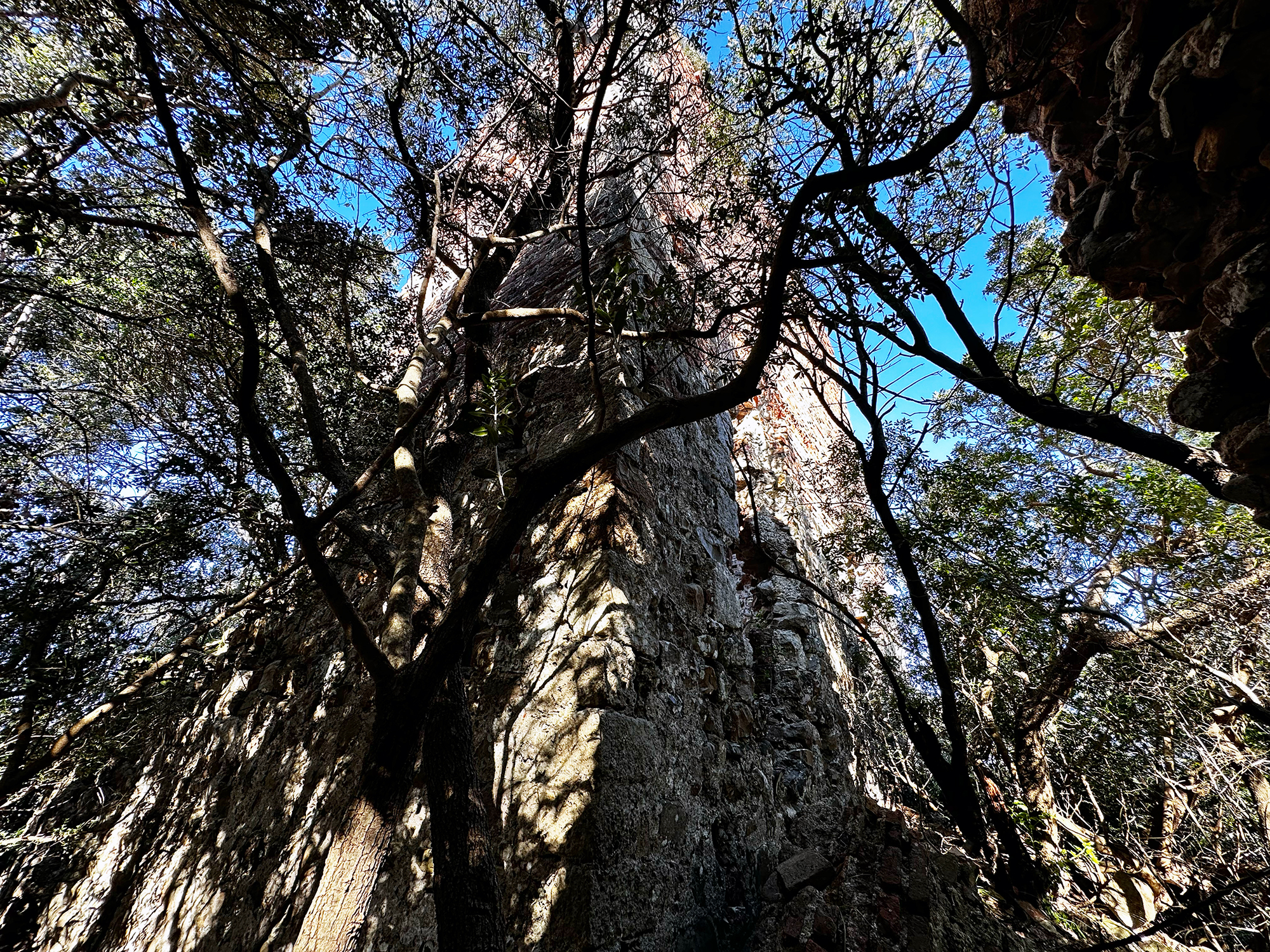
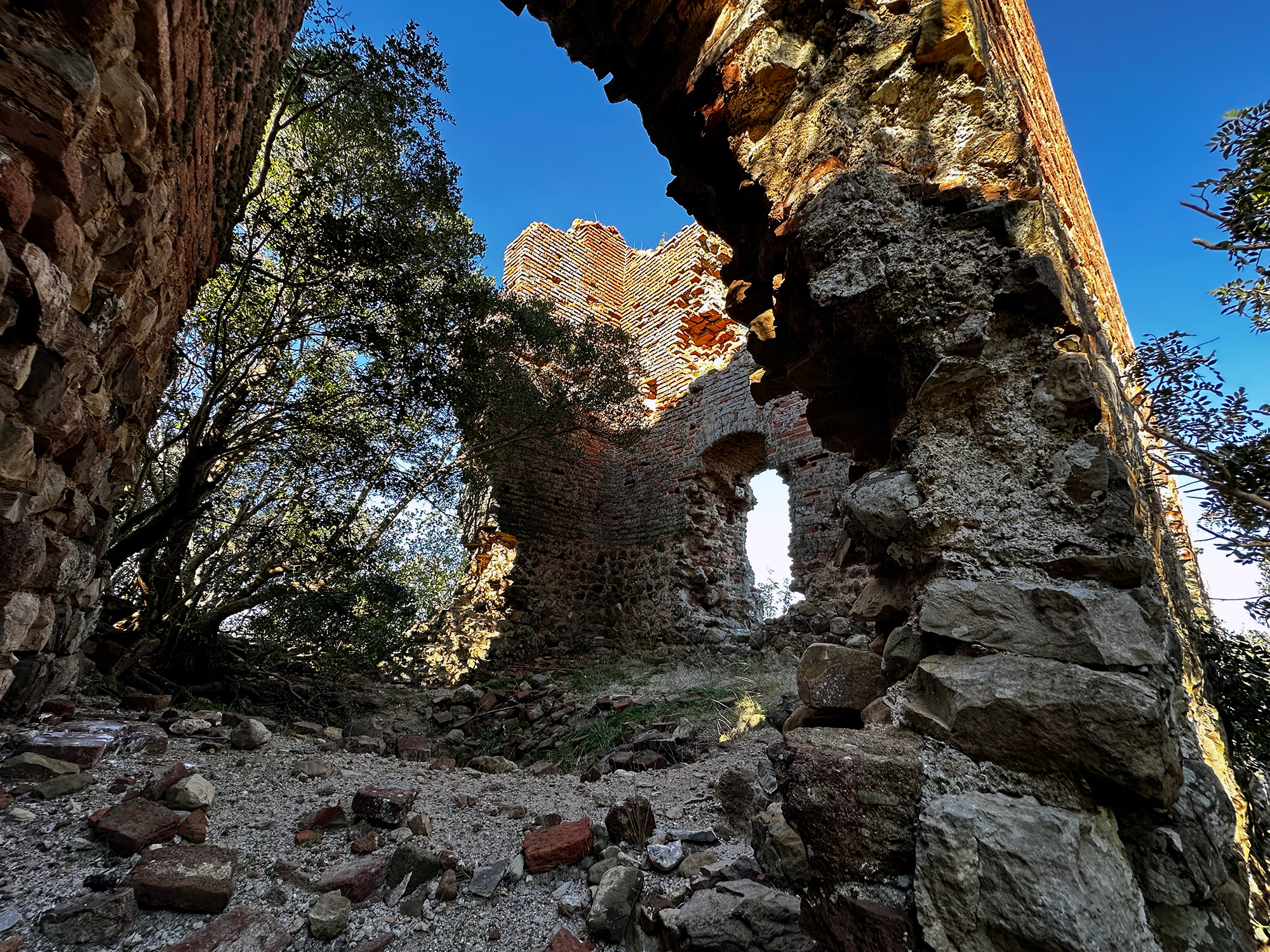
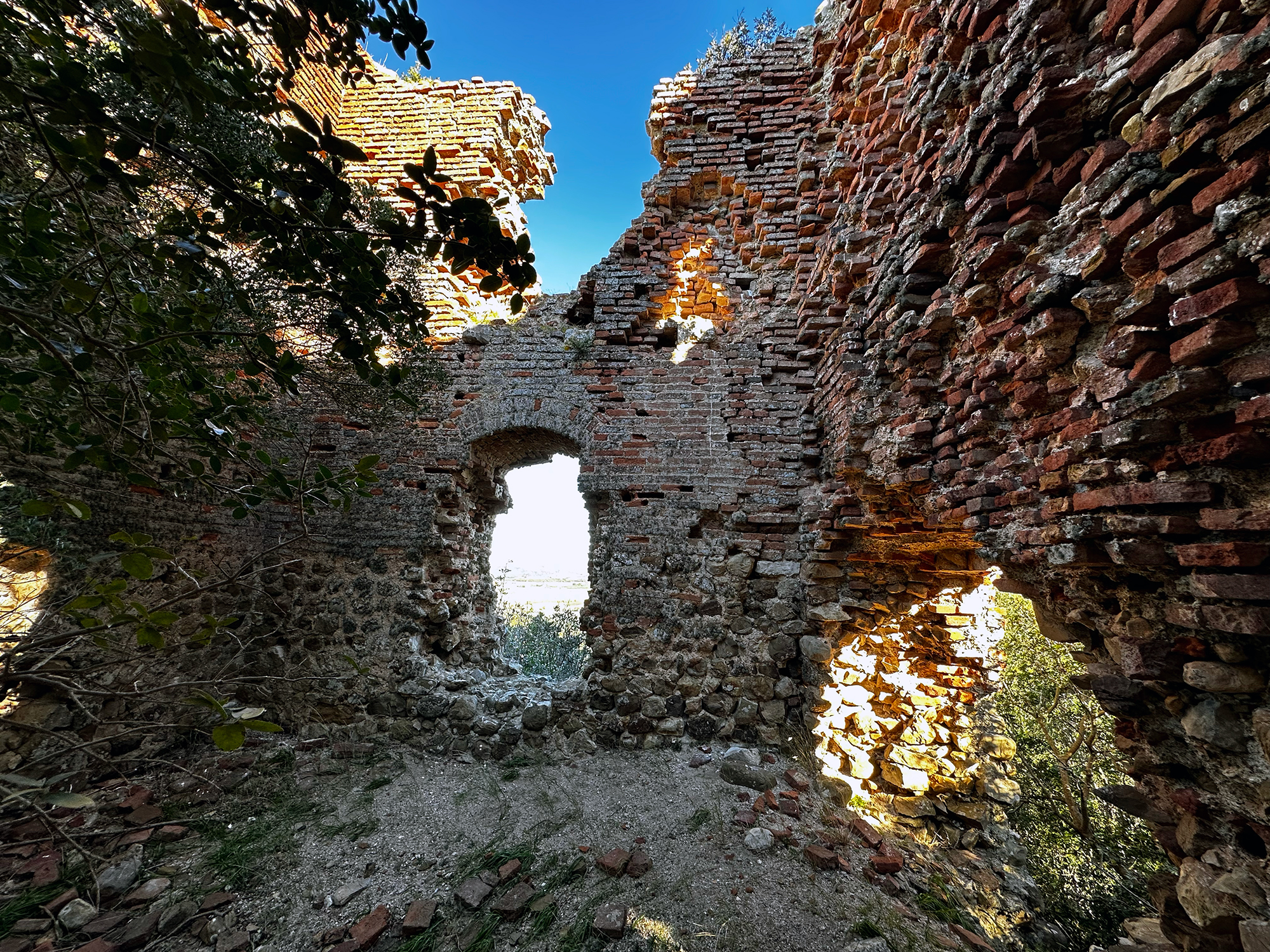
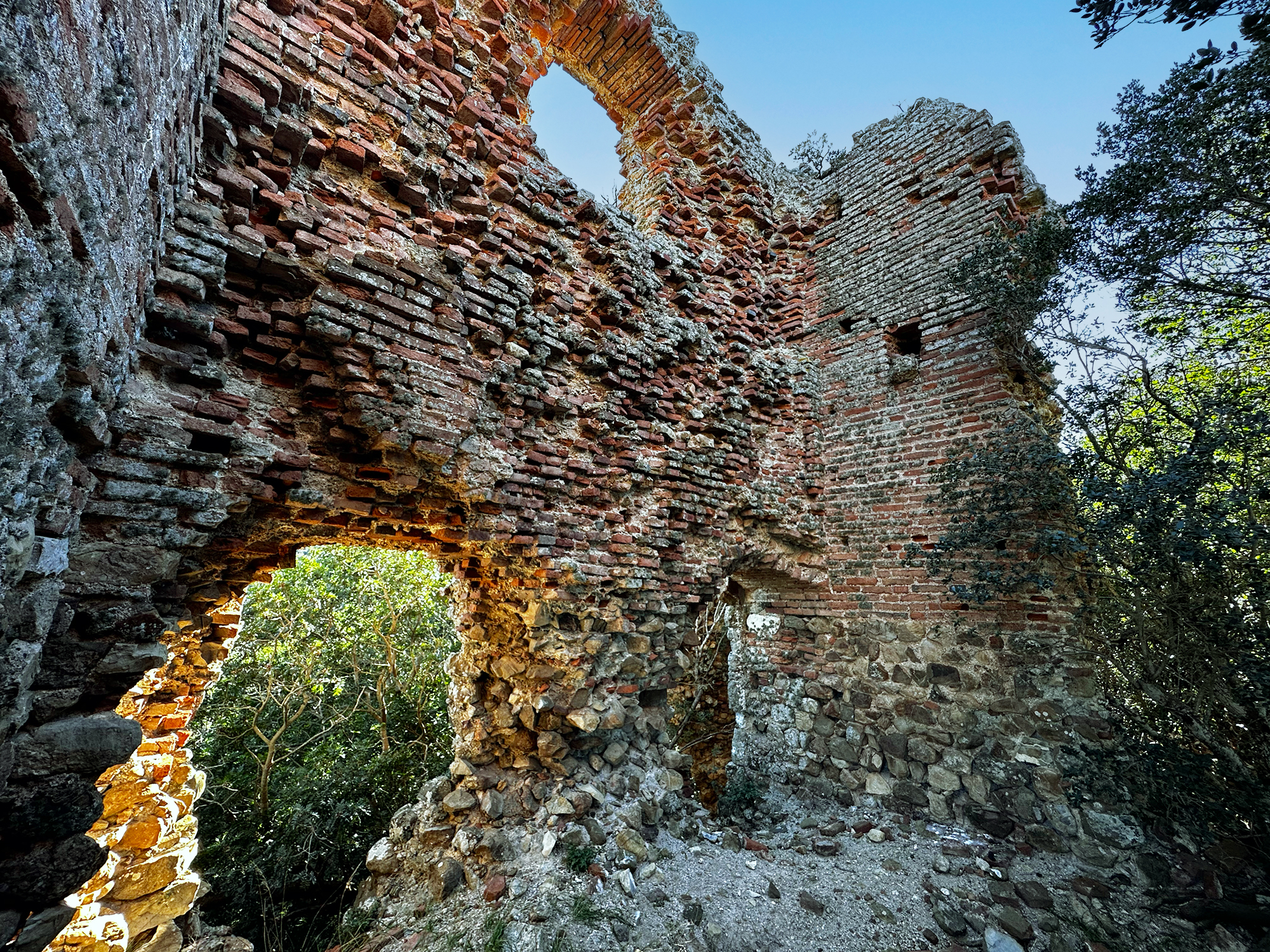
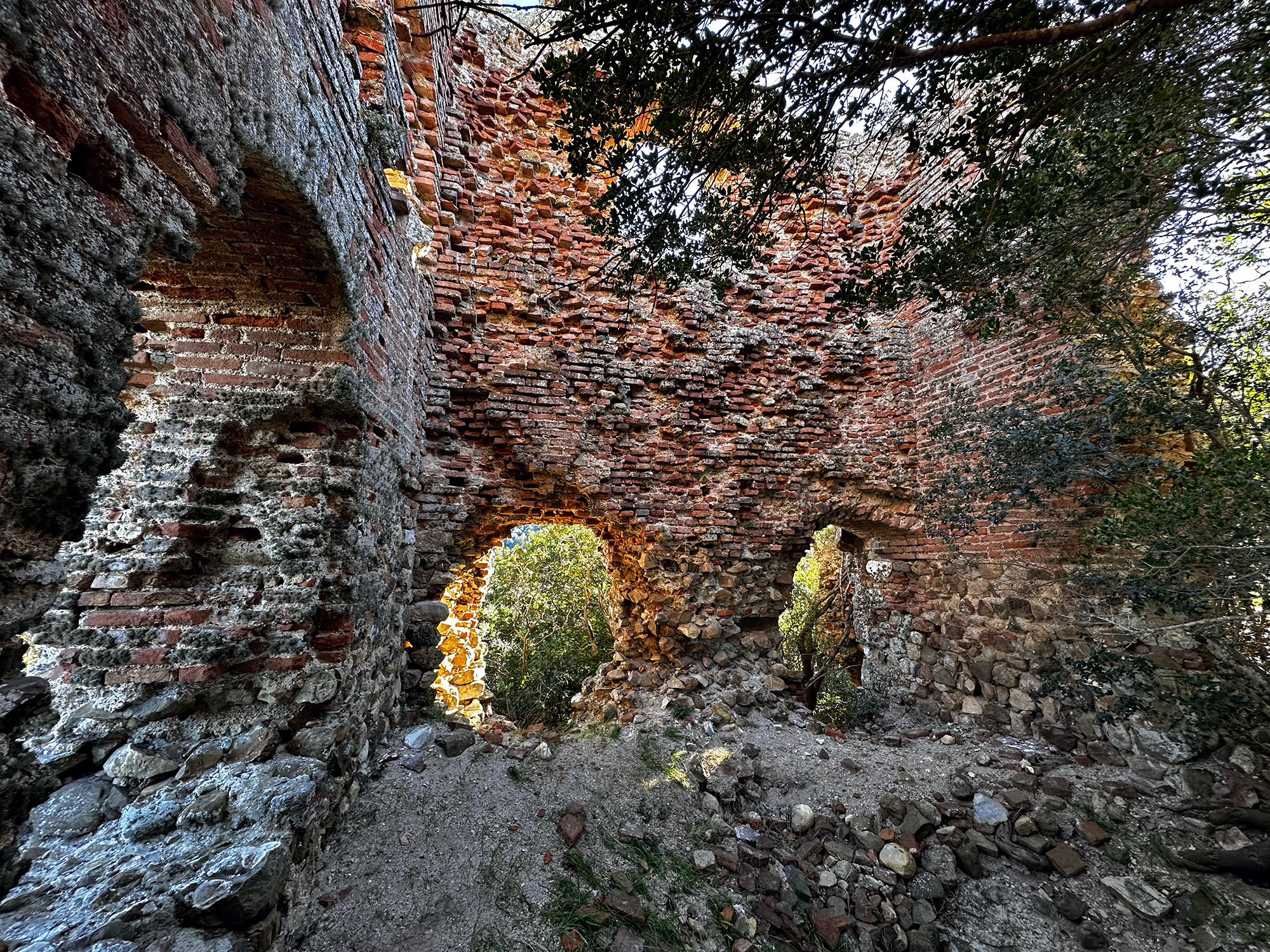
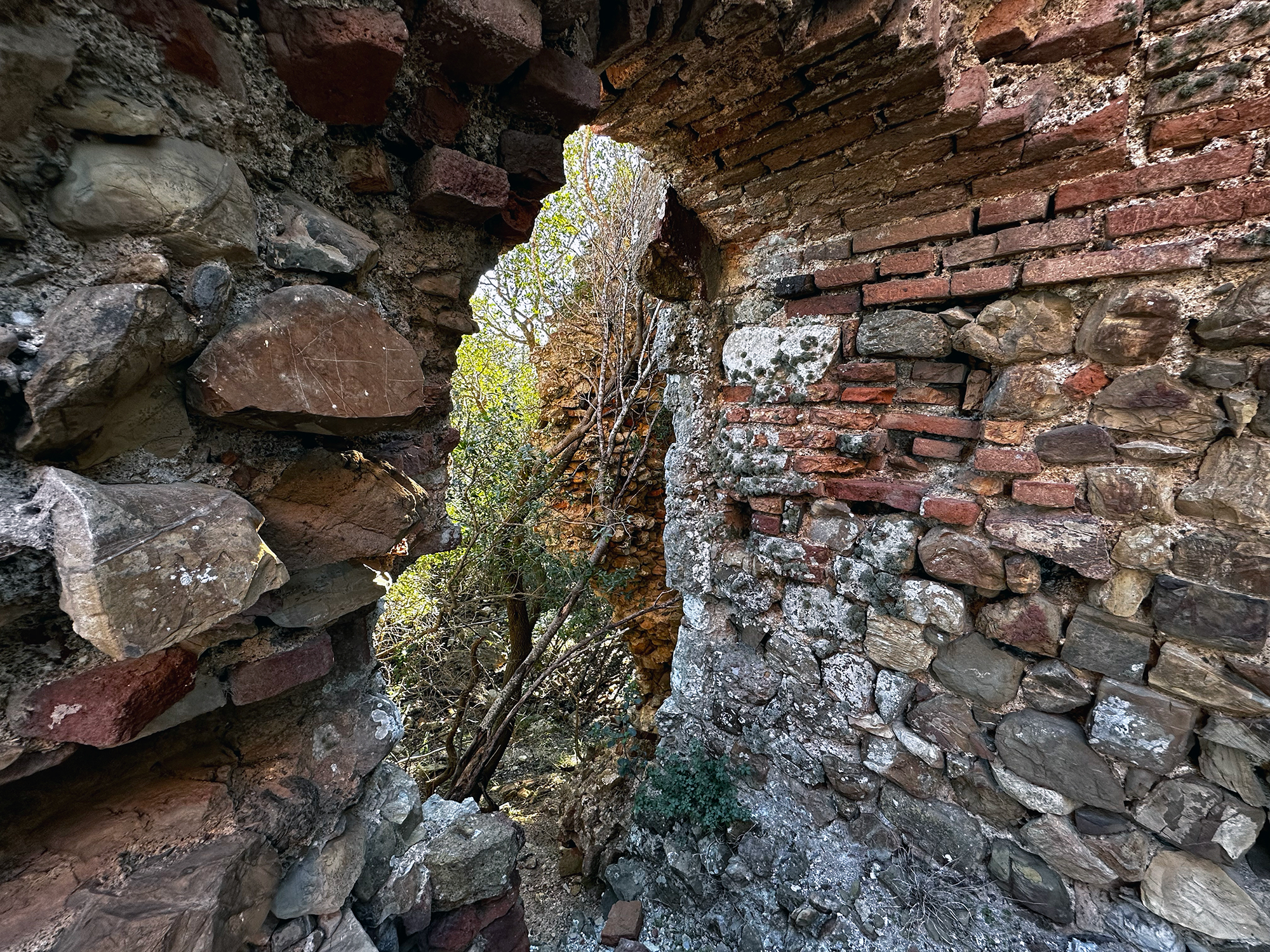
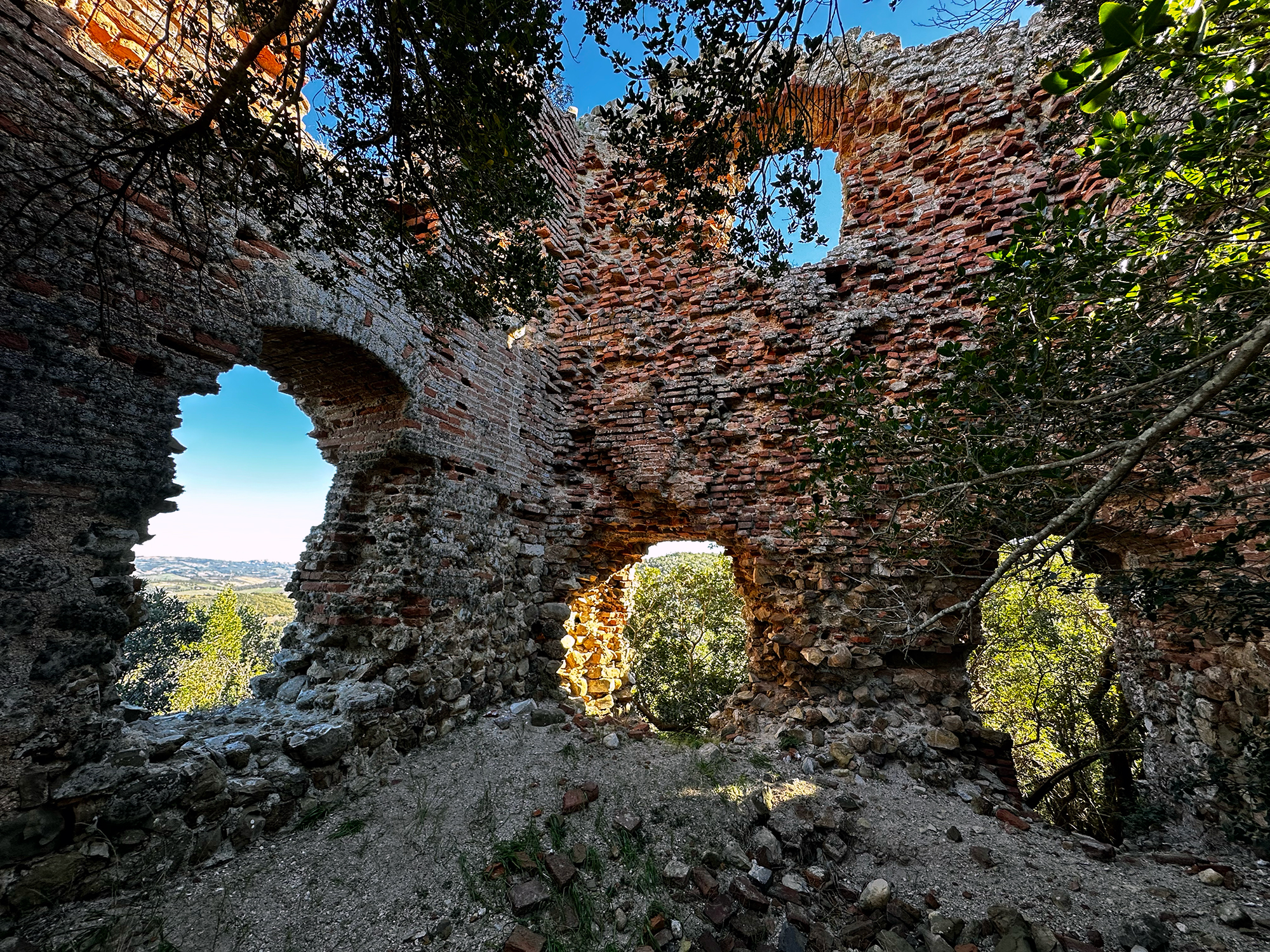
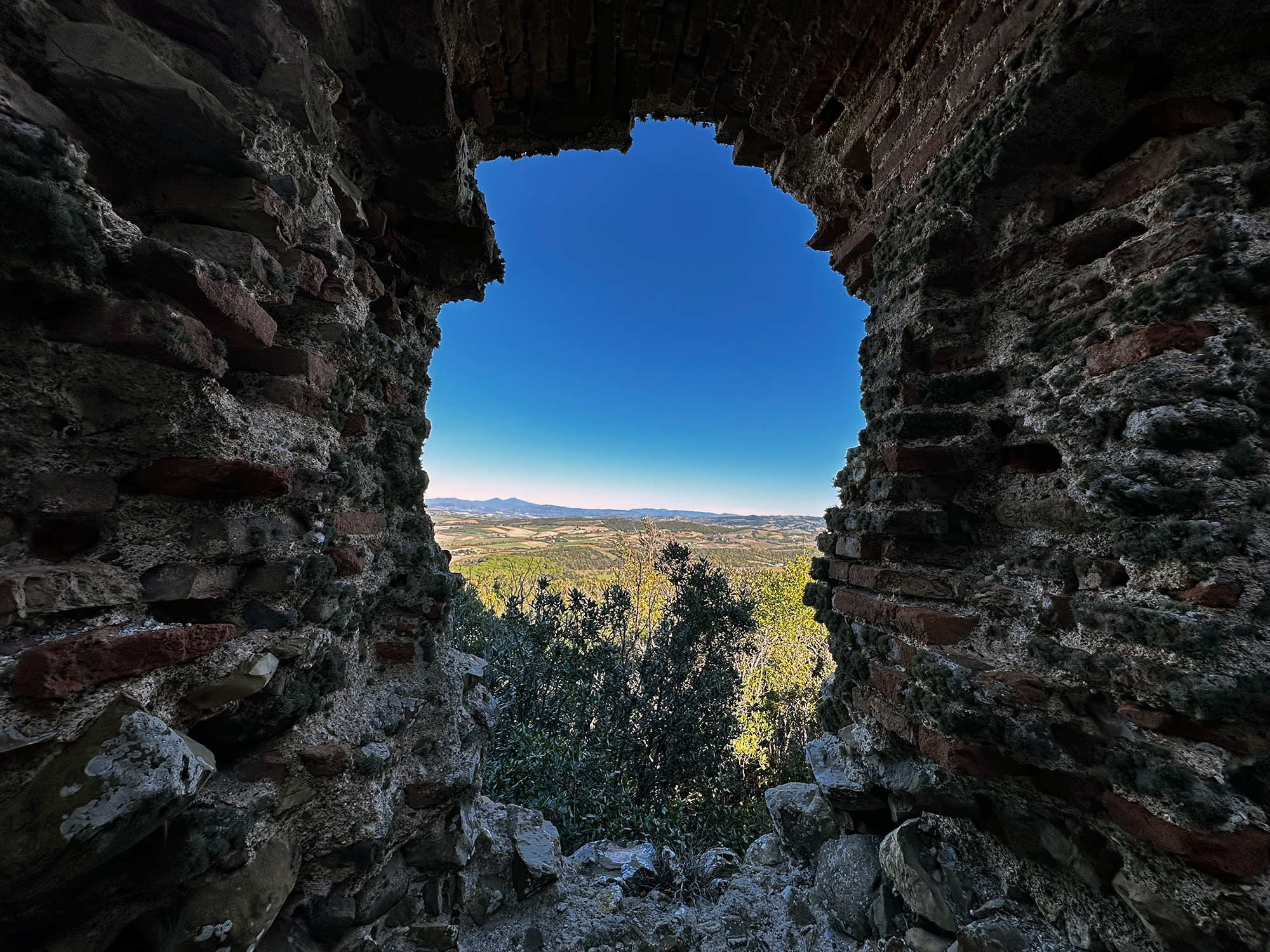
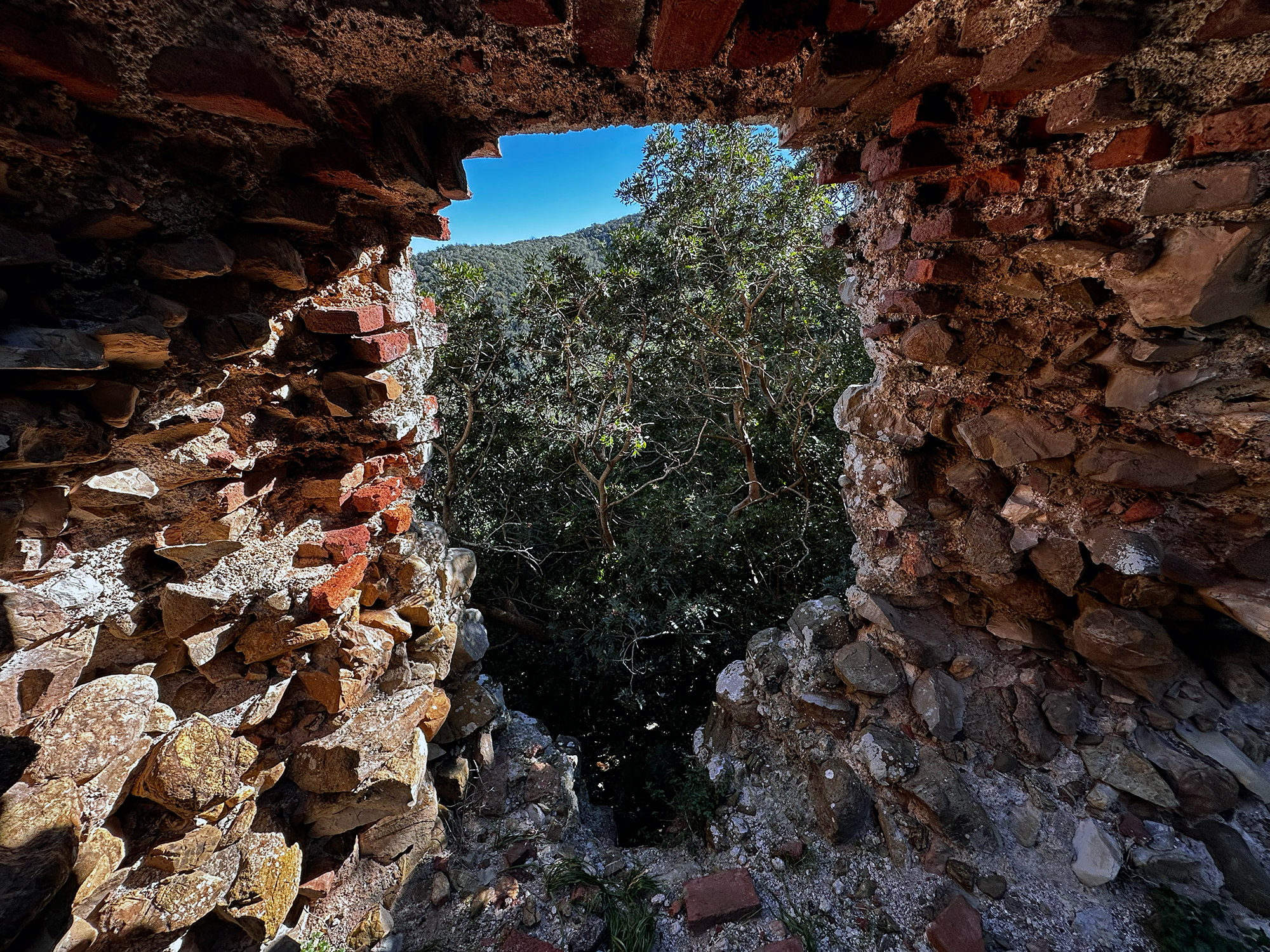
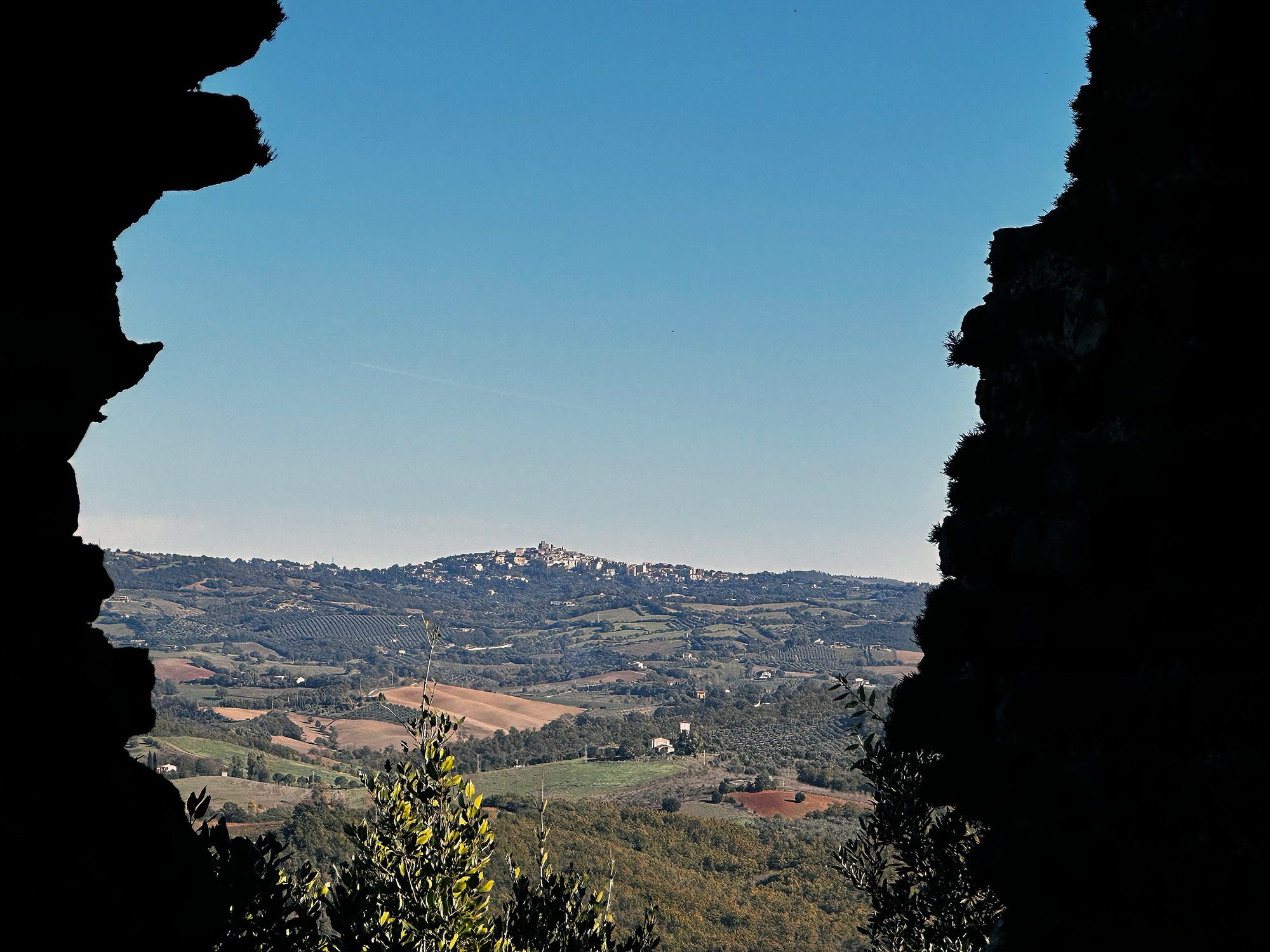














How to reach
The castle, located on private property, is accessible only by crossing dirt roads, trails, and a final stretch through dense vegetation. The easiest route starts from Marsiliana, where you can park your car and take a downhill dirt road to the right of the one leading to the Castello della Marsiliana, which goes to the old cemetery. From there, continue along the Elsa Stream for about 3 kilometers.
After a slight climb, you will find a clearing on the left with some beehives and the remains of a farm building. At this point, turn right and begin to climb along a dirt road used for forest maintenance. At the first fork, it is advisable to take the path on the right, which will lead you to the top of the hill. Here, on the left, you will notice an opening in the vegetation; continuing for a few dozen meters, you will start to see the first remains of the ancient walls scattered in the undergrowth. The round-trip route is approximately 9 kilometers long with an elevation gain of about 230 meters.
History
The ruins of the Castle of Stachilagi, also known as La Castellaccia, rise atop a hill in the heart of the Marsiliana Estate of Principe Corsini, overlooking the Elsa stream valley in the southwestern part of the Manciano municipality, east of the village of Marsiliana. Built in its current form in the 13th century near the pre-existing Abbey of the Selva and its monastery, dating back to the mid-12th century, its historical roots trace back to an even earlier era. Known as Castrum Elsae, it was already part of the possessions of the Abbey of the Three Fountains in Rome, to which it was donated by Gregory VII in the second half of the 11th century and granted as a fief to the Aldobrandeschi family. In 1216, the castle was mentioned in the act of division of the Aldobrandeschi County among the possessions of Count Bonifazio.
During the 14th century, the castle was the focus of disputes between the Aldobrandeschi of Santa Fiora, the Baschi family, and the Municipality of Orvieto, ultimately falling under the control of the Republic of Siena at the beginning of the 15th century. Between the late 15th and early 16th centuries, it was part of the lordship of Pandolfo Petrucci, following the fate of the Castle of Scerpena. After the destruction of the latter, Stachilagi was ceded to private owners and later sold to the Municipality of Siena in 1409. With the annexation of the Republic of Siena into the Grand Duchy of Tuscany in the mid-16th century, the complex gradually lost its prestige and importance, eventually being abandoned as both a fortification and a religious site.
Today, the castle appears as imposing ruins immersed in dense vegetation, bearing witness to its former grandeur. Significant portions of the stone wall enclosure remain, preserved up to a height of 5 meters in some places, with a few arrow slits. At the hilltop stands a large tower with a stone base and a brick structure, approximately 10 meters tall, which served as a strategic and signaling element, perfectly aligned with the Rocca of Manciano. The tower features a lightly sloped base, a lowered-arch doorway, several openings, and likely had a vaulted covered floor (now completely buried). Next to the tower are the remains of an additional defensive wall that protected the eastern entrance.
To the north of the tower, on the plateau, lie the ruins of the Abbey of the Selva, once a spiritual center and key reference point for the area. An analysis of the archaeological remains reveals that the church, built with greater care than the castle, featured a single nave and an apse. Mentioned in the tithes lists from the late 13th century, the abbey, along with its monastery, played a significant role until the gradual decline of the complex during Medici rule.